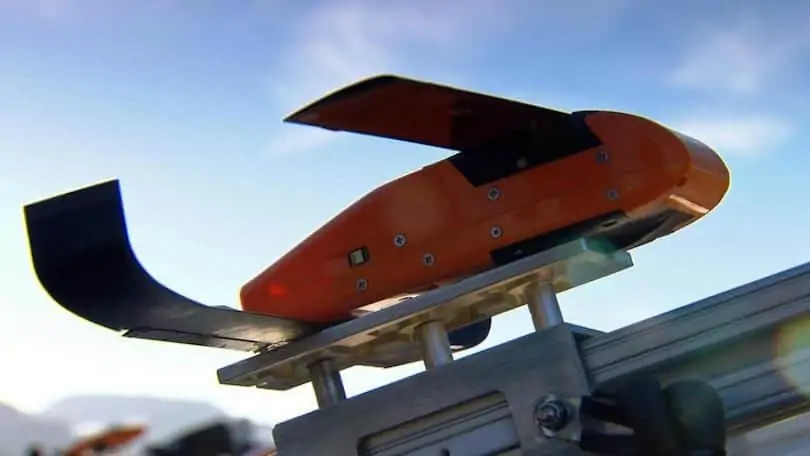The U.S. Department of Defense has carried out its largest ever test of micro-drone swarms at China Lake, California. In the trials, three F/A-18 Super Hornets released 103 Perdix drones mid-flight; the micro-drones then demonstrated advanced swarm behaviors such as collective decision-making, adaptive formation flying, and self-healing.
The swarm does not know how, exactly, it will perform the task before it is Depreleased. William Roper of the Department of Defense explained: “Perdix are not pre-programmed synchronized individuals, they are a collective organism, sharing one distributed brain for decision-making and adapting to each other like swarms in nature. Because every Perdix communicates and collaborates with every other Perdix, the swarm has no leader and can gracefully adapt to drones entering or exiting the team.”
Watch a video of the test below:
The demonstration is one of the first examples of the Pentagon using teams of small, inexpensive, autonomous systems to perform missions once achieved only by large, expensive ones. Roper stressed the department’s conception of the future battle network is one where humans will always be in the loop. Machines and the autonomous systems being developed by the DoD, such as the micro-drones, will empower humans to make better decisions faster.
Originally designed by Massachusetts Institute of Technology engineering students, the Perdix drone was modified for military use by the scientists and engineers of MIT Lincoln Laboratory starting in 2013. Drawing inspiration from the commercial smartphone industry, Perdix software and hardware has been continually updated in successive design generations. Now in its sixth generation, October’s test confirmed the reliability of the current all-commercial-component design under potential deployment conditions—speeds of Mach 0.6, temperatures of minus 10 degrees Celsius, and large shocks—encountered during ejection from fighter flare dispensers.
As the Strategic Capabilities Office works with the military Services to transition Perdix into existing programs of record, it is also partnering with the Defense Industrial Unit-Experimental, or DIUx, to find companies capable of accurately replicating Perdix using the MIT Lincoln Laboratory design. Its goal is to produce Perdix at scale in batches of up to 1,000.



















